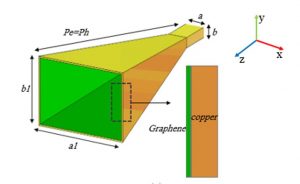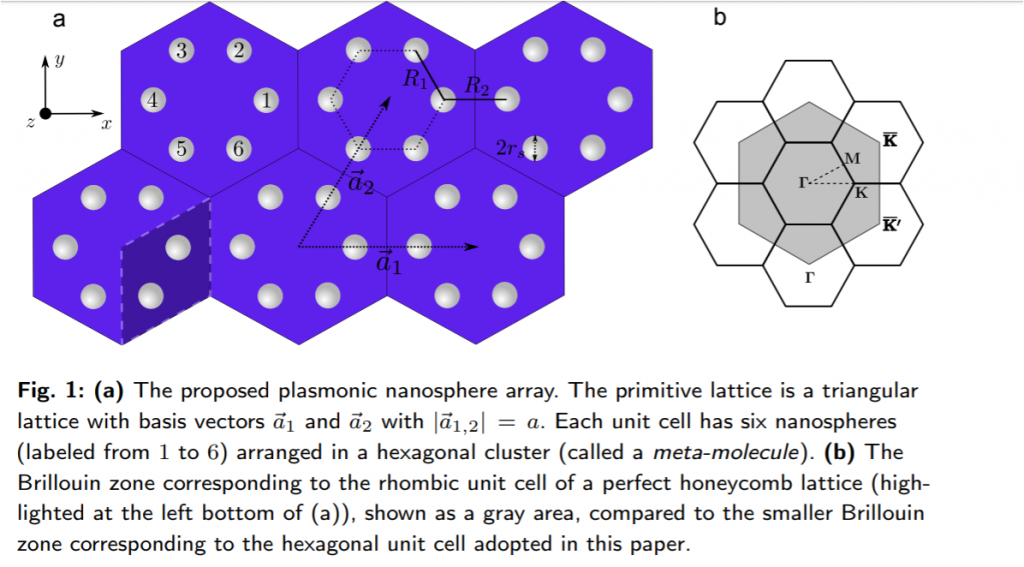Mr. Pedram Shojaedini successfully defended his Master thesis.
Congrats to Pedram!
Category Archives: Uncategorized
Dr. Yousefi was selected as the “Successful Faculty Member in Achieving an International Position” in 5th International Festival of University of Tehran
Our paper on “Graphene-based low side-lobe microwave horn antenna,” was accepted for publication in IET Microwaves, Antennas & Propagation
Abstract:
In this paper, a novel method is proposed to control and reduce the side-lobe level (SLL) of the pyramidal horn antennas. In this method, graphene sheets are deposited on the antenna walls to taper the aperture field leading to pattern engineering with the goal of the side-lobe level reduction. In essence, graphene sheet acts as a high impedance surface (HIS) and hinders electromagnetic power from reaching to the horn antenna aperture edges, in such a way that the diffraction phenomenon could be drastically diminished. The proposed design is numerically analyzed and optimized using full wave 3D simulation methods. Numerical full-wave results illustrate more than 17.6 dB reduction in the side lobe level of the proposed antenna.

Link:
Our paper on “Far Field Subwavelength Imaging using Phase Gradient Metasurfaces” was accepted for publication in IEEE Journal of Light Wave Technology
Abstract
Imaging subwavelength features of an object is in close relationship with extracting information included in evanescent waves scattered from the object. These evanescent waves decay exponentially with distance, therefore, they can not be captured at far-field, resulting in a resolution limited image of the object. Here, we propose a far field imaging technique based on gradiant metasurfaces, with ability to provide an image of subwavelength features. In this technique, gradient metasurfaces are used to convert evanescent waves scattered by subwavelength features into propagating waves resulting in a resolution beyond the diffraction limit. The performance of the proposed imaging technique is evaluated using full wave numerical analysis and the results validate its capability for imaging beyond the diffraction limit.


Link:
Our paper on “Topological Plasmonic Edge States in a Planar Array of Metallic Nanoparticles” was accepted for publication in Nanophotonics
Abstract:
Photonic topological insulators (PTIs) are electromagnetic structures with highly robust uni-directional edge states, originating from their non-trivial bulk band topology. Here, we propose a plasmonic PTI that supports highly confined one-way edge states capable of transporting deep subwavelength optical frequency plasmons through arbitrary paths without back-scattering. The structure consists of a simple planar array of coupled plasmonic nanoparticles arranged in a perturbed honeycomb lattice, that exhibits non-trivial band topology. The operation frequency of the emergent edge states is shown to be independent of the lattice constant allowing for the miniaturization of the structure. As a high frequency PTI with a simple and planar design, this structure is compatible with well-established integrated nanofabrication technologies and may find application in planar, compact and topologically robust integrated nanophotonic devices.

Link:
https://www.degruyter.com/view/j/nanoph.2019.8.issue-5/nanoph-2018-0230/nanoph-2018-0230.pdf
Mr. Mohammad Reza Fathizadeh successfully defended his Master thesis
Mr. Mohammad Reza Fathizadeh successfully defended his Master thesis. Congrats to Mohammad Reza!
Mr. Vahid Ghaffari successfully defended his PhD Proposal.
Mr. Vahid Ghaffari successfully defended his PhD Proposal.
Congrats to Vahid!
Our paper on “Polarization-Independent Dielectric Metasurface Lens for Absorption Enhancement in Thin Solar Cells” was accepted for publication in Journal of Optics
Abstract:
In this paper, we use a polarization independent phase gradient metasurface to trap sunlight inside a thin film solar cell. In this method, the metasurface is placed at the bottom of the solar cell to anomalously reflect light rays of Sun and prevent them from escaping the cell. The performance of the proposed structure is numerically studied at different wavelengths as well as different angles of incidence, for both TM and TE polarizations. The numerical results show absorption enhancement in a wide range of wavelengths, and short circuit current improvement for both TM and TE polarizations.

Link